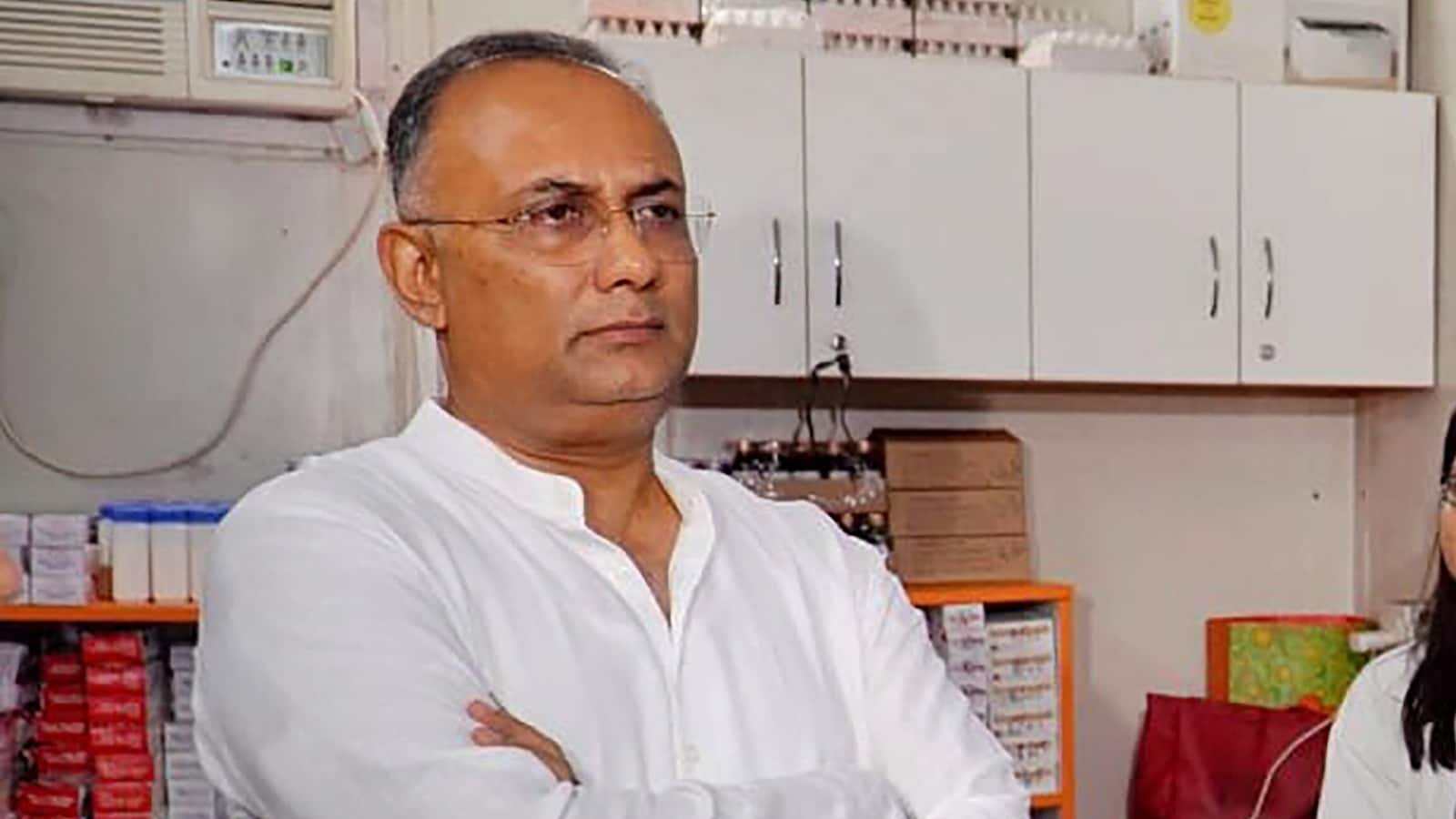Restaurants & Food
Indian Restaurants Set for a Rebound as Inflation Eases

The Indian restaurant industry began 2024 on uncertain footing, grappling with challenges from rising food inflation. After a short-lived boom of “revenge dining” following the pandemic, restaurants saw a significant dip in customer footfall. High food prices, particularly for essentials like vegetables, cereals, and pulses, combined with a cautionary approach to spending by consumers, led to reduced profitability across the sector. The first quarter of the year, typically a promising period for restaurants, became a difficult landscape for both fine dining and casual outlets.
Inflation had a particularly acute effect on the restaurant business. For example, food inflation surged to over 10% in June 2024, significantly raising input costs for restaurateurs. Items that form the backbone of Indian cuisine, such as tomatoes, onions, and grains, became more expensive, making it hard for restaurants to maintain profit margins without raising prices on their menus. However, given that customers were already reducing their discretionary spending, this further reduced traffic, creating a cycle of diminished returns.
Teja Chekuri, Founder of Full Stack Ventures, highlights the impact of this price surge, “The surge in food prices in the first part of the year did pose a significant challenge to the restaurant industry, as most of us grappled with the complexities of either absorbing the increased costs and letting it impact our margins or passing it on to customers and bracing for an adverse impact. These problems obviously would come to pass, as the strain was caused by significant natural calamities, geopolitics and socio-economic factors that led to supply chain disruptions.”
The competition from cheaper, unorganised players also exacerbated the issue. Many small-scale eateries and street food vendors, who operate at a lower cost, became more appealing to price-conscious consumers. Quick-service restaurants (QSRs) and organised dining chains faced stiff competition, particularly as they were hit harder by inflation due to higher operational costs.
Economic Optimism and the Promise of Recovery
Despite these hurdles, industry leaders are optimistic about a turnaround. Speciality Restaurants Ltd, which owns popular brands like Mainland China and Sweet Bengal, believes that the challenges are temporary. Anjan Chatterjee, CMD of Speciality Restaurants, noted that food inflation is a short-term phenomenon and expressed confidence in India’s economic fundamentals. As inflation begins to ease, he anticipates a resurgence in dining out.
There are reasons for this optimism. By July 2024, food inflation had fallen to 3.45%, a significant drop from June’s over 10% rate. This easing inflation, coupled with strong economic fundamentals such as improved employment rates and rising disposable incomes, provides the industry with a more stable environment. As wages rise and employment generation improves, consumers are likely to return to restaurants, further buoying the sector.
“However, with that behind us, we are extremely optimistic that the turnaround is in process and that’s primarily due to investor confidence in the Indian growth story, and the demonstrated resilience of India’s economy in the face of global uncertainties. India’s steady GDP growth, falling fiscal deficit, favourable policies for MSMEs and a burgeoning middle class, has been a marker of this optimistic view we hold,” Chekuri added.
Industry analysts point out that India’s robust economic growth could support a strong rebound. The IMF has projected India’s economy to grow by 6% in 2024, one of the highest rates among major global economies. This growth is likely to increase consumer spending, which will benefit sectors like dining and hospitality.
Key Trends Driving the Industry’s Revival
One of the main drivers behind the recovery is the growing demand for food delivery services. The pandemic fundamentally changed consumer behaviour, pushing more people to order food online. Even as restrictions eased, this trend continued, with the food delivery market growing by 52% since the pandemic began. This demand is expected to persist, growing by 10.3% annually between 2023 and 2030.
Restaurants are capitalising on this shift by expanding their delivery options and investing in cloud kitchens. These “ghost kitchens” focus exclusively on online orders, significantly reducing overhead costs like rent and front-of-house staff. By eliminating the need for physical dining spaces, restaurants can increase their profit margins while meeting the growing demand for convenient, at-home dining experiences. “The growth in food delivery services has been a lifeline for us and will continue to fuel recovery. Similarly, automation and cloud kitchens have helped reduce costs and improve operational efficiency,” said Nishit Rajvanshi the founder of Mumbai-based Chango Wings.
Technological innovations are also transforming the industry. From AI to robotics, restaurants are increasingly adopting advanced technologies to improve operational efficiencies. In cities like Mumbai, fine dining establishments are leading the way by incorporating automated systems that enhance customer service and streamline operations. This push toward innovation is helping restaurants reduce costs and improve profitability, even as they navigate inflationary pressures.
Moreover, digital marketing is becoming a cornerstone of restaurant strategies. With 88% of consumers trusting online reviews over personal recommendations and 75% using social media to decide on a restaurant, a strong online presence is now essential. Restaurants are leveraging social media platforms and digital advertising to engage customers, build loyalty, and drive footfall.
The Resilience of Fine Dining and Casual Dining
The fine dining segment, in particular, has shown resilience amid economic challenges. A report by the National Restaurant Association of India (NRAI) highlights that consumers are increasingly drawn to premium dining experiences. While inflation has raised food prices, it has also led to a shift in consumer preferences toward quality over quantity. More consumers are seeking out memorable dining experiences and are willing to spend more on premium ingredients, ambiance, and service.
This shift has encouraged fine dining restaurants to innovate with their menus, offering niche culinary experiences that cater to evolving consumer tastes. The concept of “farm-to-table” dining, which promotes locally sourced and sustainable ingredients, has gained popularity. By integrating seasonal produce and fresh ingredients, restaurants can not only mitigate the effects of inflation but also align with consumer preferences for healthy, sustainable dining options.
Future Outlook and Challenges Ahead
While the industry is poised for recovery, challenges remain. Inflationary pressures, particularly on labour and food costs, will likely persist, making it critical for restaurants to innovate continuously. The rise of food delivery, contactless payments, and technology-driven operations will shape the industry in the years to come, but staying profitable in a high-cost environment will require careful planning and execution.
Sharing optimistic perspective on the future, Chekuri commented, “With eventual easing conditions, and India’s demographic advantage and growth trajectory, we are bound to see an economic upturn in the restaurant industry, which if backed by policy support from the government, will grow from strength to strength.”
Restaurants will need to balance pricing strategies with consumer expectations, ensuring that they do not alienate their customer base by passing on too many costs. Additionally, the push for sustainability and local sourcing, while beneficial in the long term, could drive up costs in the short term.
However, the long-term prospects remain bright. With annual growth in the food services sector projected at 8.1% between 2024 and 2028, driven by urbanisation and technological advancements, the restaurant industry is expected to flourish once inflation stabilises. The combination of a growing middle class, increasing disposable incomes, and a shift toward quality dining experiences will fuel the industry’s recovery and growth in the coming years.
Restaurants & Food
Owners of Anokha Indian restaurant in Short Pump open new spot in Chesterfield

The owners of a longtime Short Pump-area Indian restaurant have branched into Chesterfield.
Last month Jassi Singh and Charanjeet Ghotra opened Rutba Indian Kitchen at 13822 Village Place Drive in the Midlothian Village Square shopping center.
Rutba is Singh and Ghotra’s second local restaurant, joining Anokha Unique Cuisine of India, which they opened near Short Pump Town Center in 2008. The duo also own two restaurants in Charlottesville, Milan Indian Restaurant and Kanak Indian Kitchen.
Ghotra said Rutba’s menu is similar to Kanak’s with classics like butter chicken, samosas and grilled kebabs, along with Chukundari kofta, which is a vegetarian take on meatballs with beetroots, and the Paneer Bhatura, a type of bread that’s stuffed with Indian cheese and spices.
“We have a lot of dishes that we had created (at Kanak) that are very popular there, and people here like them as well,” Ghotra said.
Entrees at Rutba range from around $17 to $25, and it also offers a variety of Indian beers and wines, as well as a full cocktail menu.
Rutba restaurant debuted in mid-July and is open seven days a week for lunch and dinner.
Last year Singh and Ghotra purchased Rutba’s 3,000-square-foot Village Place Drive building, which was formerly a Wendy’s, for $1.2 million, according to county records. They converted the space from a fast-food joint to a sit-down restaurant with the help of Fultz & Singh Architects.
Singh and Ghotra have been in the industry for decades, starting out in restaurants in New York and Virginia Beach in the 1990s. They’ve opened four restaurants over the course of over 20 years, first with Milan in Charlottesville in 2003, and prior to Rutba, their most recent opening was in early 2020 with Kanak.
Ghotra said he and Singh always make sure their restaurants are stable and successful before moving onto another.
“If you can’t handle it properly, then there’s no point in opening (a restaurant) then closing it, right?” he said.
Rutba and Midlothian Village Square are just a mile down the street from Winterfield Crossing, which just signed on Stella’s Grocery as its newest food tenant.
Restaurants & Food
Restaurants use unsafe colouring agent: Karnataka minister on quality food | Latest News India

Karnataka Health Minister Dinesh Gundu Rao on Monday appealed to people not to be “fooled” by attractive and colourful dishes, but to insist on safe and quality food.
He cited the recent testing of six samples belonging to the Empire Group of Restaurants, which turned out to be unsafe due to the use of banned synthetic colouring.
“Despite repeated warnings, the restaurant group continued to use the unsafe colouring agent. Only after legal notices were sent did the colour go from red to yellow,” the health minister told reporters during his weekly media briefing.
There was no response from the Empire Group of Restaurants.
According to the minister, better quality food and drugs can become the norm only if people insist on quality goods.
“Yes, the government needs to do its part and tackle this legally, but people too should cultivate quality conscious as culture,” he said.
The minister also said the health department held a video conference on July 30 with cooking oil manufacturers to insist that the trans-fat level should not exceed 2 per cent.
“We told them that if it exceeds 2 per cent, strong action will be taken against them,” he added.
Dinesh Gundu Rao said the oil manufacturers were also urged to sell used cooking oil (UCO) to manufacturers like Pyrene Industries, which converts UCO into biodiesel.
According to 2024-25 data, 28,73,124 litres of UCO were used to manufacture biodiesel and soap, he said.
“We want this figure to increase substantially so that UCO does not go back into the market for cooking purposes,” he added.
Rao said the Karnataka government has merged the enforcement division of Ayurveda, Siddha and Unani (ASU) medicines under the AYUSH Department, as well as the existing AYUSH drug testing laboratory in Bengaluru, with Drug Control Division of the Food Safety and Drug Administration Department for better functioning of the Health Department.
According to him, the government’s proposed app to control drug safety is expected to be functional by the end of this month.
“With this app, we can immediately withdraw defective drugs, as we can track at distributor level. So, we can put an immediate stop to further sale of that drug,” said the minister.
He said, once the app is in force, they will expand its scope. “Next will be to take it to the pharmacy level. We want to onboard every pharmacy on the app,” he added.
At present, the recall procedure takes two days, he said, citing the recent recall of nearly 40 lakh drugs in two days.
“This too, we had made a breakthrough with the help of a software. Earlier, it used to take nearly 30 days to recall batches of failed drugs from the market,” he added.
The minister also said work is progressing at expected pace in bringing the private ambulances and mobile medical units under the ambit of Karnataka Private Medical Establishments (KPME) Act. “We will be coming out with an amendment soon,” he added.
Restaurants & Food
8 New Restaurants In Goa Serving Coastal Cuisine, Craft Cocktails, And More This August

There’s always something magical about eating out in Goa. But lately, Goa’s food scene has been cooking up something extra special. From breezy beachside haunts to flavour-packed kitchens, these new restaurants are rewriting what it means to dine in Goa. So, whether you’re here for the weekend or lucky enough to call this coastal paradise home, here are some fresh spots you’ll want to check out.
Best New Restaurants In Goa
1. Lento
Hidden in Saligao, Lento feels like a beautiful ruin slowly reclaimed by plants and patience. Designed by Dishant Pritamani, it’s a café that invites you to pause, relax, and enjoy simple, honest food. The food here is soulful and made with a lot of love by Chef Jyoti Singh. Try the Sunrise Congee, a comforting rice bowl with mushrooms and coconut sauce, or the McPav, a playful take on a chicken burger, made with juicy homemade patties and soft Goan pav. The coffee, made from beans grown in Karnataka’s Salawara Estate and crafted by an award-winning barista, is subtle and lingering.
Where: next to The Second House, Muddavaddi, Saligao, Goa
When: 9 am – 6 pm
2. House Of Telugu
If you’re craving bold flavours and a deep dive into Telugu culture, head straight to House of Telugu in Vagator. Started by the team behind Sanctuary Bar & Kitchen, this new restaurant in Goa brings homestyle comfort food, royal feasts, and street favourites under one roof. The menu is full of flavour-packed gems like Golkonda Kodi and Stuffed Mirchi Bajji is crunchy, tangy, and full of personality. Seafood lovers will love the Andhra Tawa Fish and the Bheemavaram Royyala Pulao, full of prawns and spices from the Konaseema region. To go with the food, try cocktails like the Mayabazar or the Konaseema Kiss.
Where: Panchayat road, H.no: 1615, Grand Chiwar, Amani Hotel lane, off Anjuna, Vagator, Goa
When: 12 pm – 4 pm; 7 pm – 11:30 pm
Cost: ₹1,000 (For two)
3. Morjim Culture
Morjim Culture is a new all-day destination that offers a little bit of everything. Whether you’re an early bird looking for your morning coffee or someone who wants to dance under the stars, this is your spot. In the morning, it’s all about fresh brews and feel-good food. As the sun sets, Morjim Culture turns into a sundowner paradise, where you can enjoy dishes like Golden Kataifi Prawns, Vietnamese Beach Bowl, or Shrimp Tortellini in lemon butter sauce. Pair it with cocktails like the Irish Maid or the refreshing Hey Honey. When night falls, head into Unculture, their hidden speakeasy bar and try the Spro’groni, a twist on a Negroni with coffee, or the spicy Raw Mango Picante.
Where: JPPC+3QF Gawade Wada, Morjim Culture, H# 763/A, Pernem, Gawde Vaddo, Morjim, Goa
When: 7 am – 11 pm
Cost: ₹2,200 (For two)
4. Toula Bar & Kitchen
Toula Bar & Kitchen brings together two rich food cultures, Mediterranean and Asian, in one beautiful space. The space is chic yet relaxed, perfect for a date night, a long dinner with friends, or even a quiet lunch by yourself. You might find sushi rolls paired with Mediterranean herbs or a classic hummus dish topped with soy-glazed mushrooms. The cocktail menu at this new restaurant in Goa is inspired by emotions and experiences, offering drinks that surprise and delight. It’s a dining experience that brings together different cultures, ideas, and people.
Where: H No. 124, Survey No. 52/5 & 52/8, 10/2, near Holiday Inn, Candolim, Goa
When: 12 pm – 12 am
Cost: ₹1,000 (For two)
Also Read: 10 Raksha Bandhan Menus Across India That Bring Back Shared Plates, Fights, And Fond Memories
5. Sivana Beach Goa
If you’ve been dreaming of a perfect beach day in Goa, Sivana Beach might just be your new favourite place. The sunsets here are magical, and they pair beautifully with their refreshing cocktails. One dish you simply must try is the Coconut Jam & Dark Chocolate Toastie. If you’re in the mood for something savoury, go for the Portuguese Prawns. Don’t miss the Truffle Mozzarella Fagottini either; it’s a dish made for slow afternoons. Sivana is the kind of place you’ll want to keep coming back to.
Where: Ashwem Beach Road, inside Leela Cottages, Morjim, Mandrem, Goa
When: 7 am – 1:30 am
Cost: ₹2,500 (For two)
6. Albayli
If you’re someone who loves places that feel warm and welcoming, Albayli is going to win your heart. This is a place where you can sip on cocktails, play a game of pool with friends, or curl up in a comfy corner with a book and your favourite dish. Their Thai Green Chicken Curry is rich, creamy, and perfectly spiced, served with soft jasmine rice. Or if you’re craving something more Indian, try the Albayli Murg Makhanwala. Whether you’re going solo or with a bunch of friends, this is one of those places where you come for a quick meal and end up staying much longer.
Where: No. 511 (4), Ward No, House, 1, Vagator, Goa
When: 12 pm – 4 am
Cost: ₹1,800 (For two)
7. Kai Boré
Kai Boré (which means “so good” in Konkani) is the kind of place that instantly puts you in a good mood. Whether you’re a local or a traveller, there’s something here to surprise you at this new restaurant in Goa. Start off with the Squid Butter Garlic or the Prawns Tempura. The Cheese Cigars are another hit, crunchy outside, cheesy inside, and perfect for sharing. Kai Boré is not fancy or over-the-top; it’s chill, friendly, and full of flavour.
Where: Alex Residency, Colva – Benaulim Rd, Povacao, Seraulim, Benaulim, Goa
When: 11:30 am – 3:30 pm; 7 pm – 11 pm
8. Junta de Xacutti
If you’re in the mood for something truly Goan, then you need to check out Junta de Xacutti in Margao. This new restaurant is bringing back the flavours of old Goan kitchens. Their menu is full of traditional dishes like prawn-stuffed squids, Mori Ambottik (shark curry), Thambdi Bhaji (red amaranth), and Moshkacheo Sango (drumstick and prawn curry). The chefs don’t serve the same menu every day; they change it up, bringing in different Goan classics depending on what’s fresh and available. Whether you’re a local looking for that taste of home or a traveller wanting to experience real Goan food, this is the place to go.
Where: Adolfo mansion, Bernardo F Costa Road, opp. Dogears bookshop, Pajifond, Madgaon, Goa
When: 11:30 am – 11:55 pm
Cost: ₹900 (For two)
These new restaurants are the perfect additions to Goa’s ever-evolving food scene!
Cover Image Courtesy: Supplied and Sivana Beach Goa/Instagram
For more such snackable content, interesting discoveries and the latest updates on food, travel and experiences in your city, download the Curly Tales App. Download HERE.
First Published: August 04, 2025 8:55 PM
-

 Brand Stories2 weeks ago
Brand Stories2 weeks agoBloom Hotels: A Modern Vision of Hospitality Redefining Travel
-

 Brand Stories1 week ago
Brand Stories1 week agoCheQin.ai sets a new standard for hotel booking with its AI capabilities: empowering travellers to bargain, choose the best, and book with clarity.
-

 Destinations & Things To Do2 weeks ago
Destinations & Things To Do2 weeks agoUntouched Destinations: Stunning Hidden Gems You Must Visit
-

 Destinations & Things To Do1 week ago
Destinations & Things To Do1 week agoThis Hidden Beach in India Glows at Night-But Only in One Secret Season
-

 AI in Travel2 weeks ago
AI in Travel2 weeks agoAI Travel Revolution: Must-Have Guide to the Best Experience
-

 Brand Stories1 month ago
Brand Stories1 month agoVoice AI Startup ElevenLabs Plans to Add Hubs Around the World
-

 Brand Stories4 weeks ago
Brand Stories4 weeks agoHow Elon Musk’s rogue Grok chatbot became a cautionary AI tale
-

 Asia Travel Pulse1 month ago
Asia Travel Pulse1 month agoLooking For Adventure In Asia? Here Are 7 Epic Destinations You Need To Experience At Least Once – Zee News
-

 AI in Travel1 month ago
AI in Travel1 month ago‘Will AI take my job?’ A trip to a Beijing fortune-telling bar to see what lies ahead | China
-

 Brand Stories2 weeks ago
Brand Stories2 weeks agoContactless Hospitality: Why Remote Management Technology Is Key to Seamless Guest Experiences












